How To Get Started With Email Marketing Tracking

Now that you’ve mastered the art of creating an email marketing database and writing persuasive email marketing content, you can consider the best ways to track and evaluate progress over time so you can maximize gains from your email campaigns. Tracking the right email metrics will help you understand the approaches work well for your company and the methods aren’t as effective and might need to be reconsidered.
In this article, I will share with you everything you need to know about email marketing tracking, as well as how you can track the effectiveness of your campaigns. Let’s jump right into the details!
What is email marketing tracking?
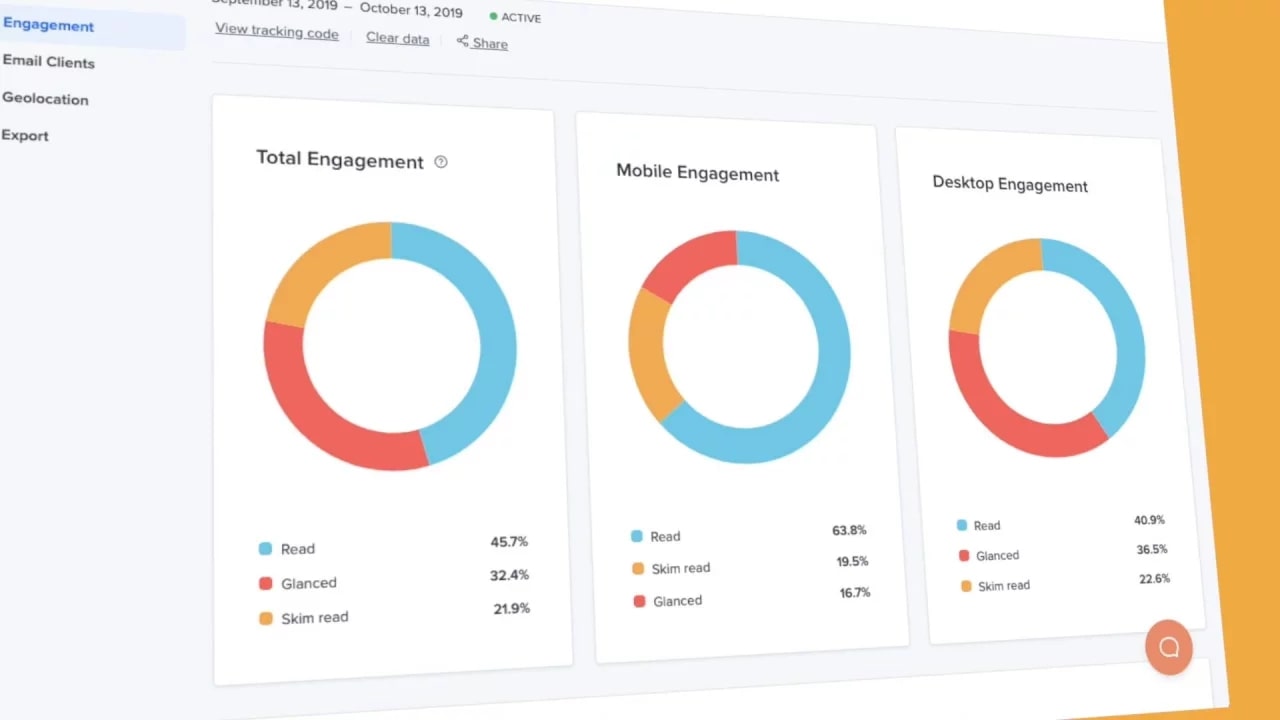
Email marketing tracking is the practice of gaining and evaluating data about how the target audience interacts with marketing emails you send them. Your metrics should be linked to your short and long-term business objectives. Key performance measures are the metrics that you consider essential in determining the effectiveness of your campaigns (KPIs).
Importance of tracking your email campaigns
Analytic tools provided with email marketing software are the most convenient way to monitor how well the email marketing campaigns perform. Emails can also be tracked using a Google Analytics account. The resources that come with email marketing software, on the other hand, are the simplest and most cost-effective ways to monitor email marketing performance.
One of the most trackable ways of marketing is email marketing. According to data, entrepreneurs can expect an average return of $42 for every $1 spent on email marketing. According to the survey, 81 percent of small businesses also use email as their primary consumer acquisition medium, and 80 percent use it for retention. You can’t tell how well your marketing strategies are doing until you analyze your email campaigns.
What to do to track email results successfully
1. Determine the timing. You should track email output on a regular basis. However, before establishing KPIs, it is a good idea to create a tracking schedule, whether it is weekly, monthly, or campaign by campaign. In any case, you can compare improvements to benchmarks and previous results, making it simple to identify trends of growth or decline. These can then be assigned to a specific type of email campaign, a specific consumer group, a specific product type, or external factors that may be influencing the campaign’s success.
2. Outline your priorities and goals. Performance tracking needs to be pertinent to the campaign’s priorities and objectives. It is important to develop specific priorities and objectives at an early stage of strategizing. When describing these, consider how measurable they are and how the measurement can be accomplished.
3. Examine what works (and what doesn’t). Analyzing the links or imagery that have generated the most clicks can also shed light on the type of content that is engaging your subscribers. You will learn more about your audience by observing their behaviour, such as what interests them or which content isn’t successful in driving any action or interaction.
5 Steps to optimize your email marketing tracking

Tracking your current email marketing success is critical for determining the efficacy of any campaign. If you want to better understand what all of these numbers mean for you, you must first create a baseline. Here are five steps you should take right now to improve the effectiveness of your email marketing…
Step 1: Chart Past Broadcasts
First, go back and map the below metrics for your previous email marketing campaigns from the last 3-12 months. You should display data of your open rates, click-through rates, unsubscribe rates, complaint rates, and forward rates.
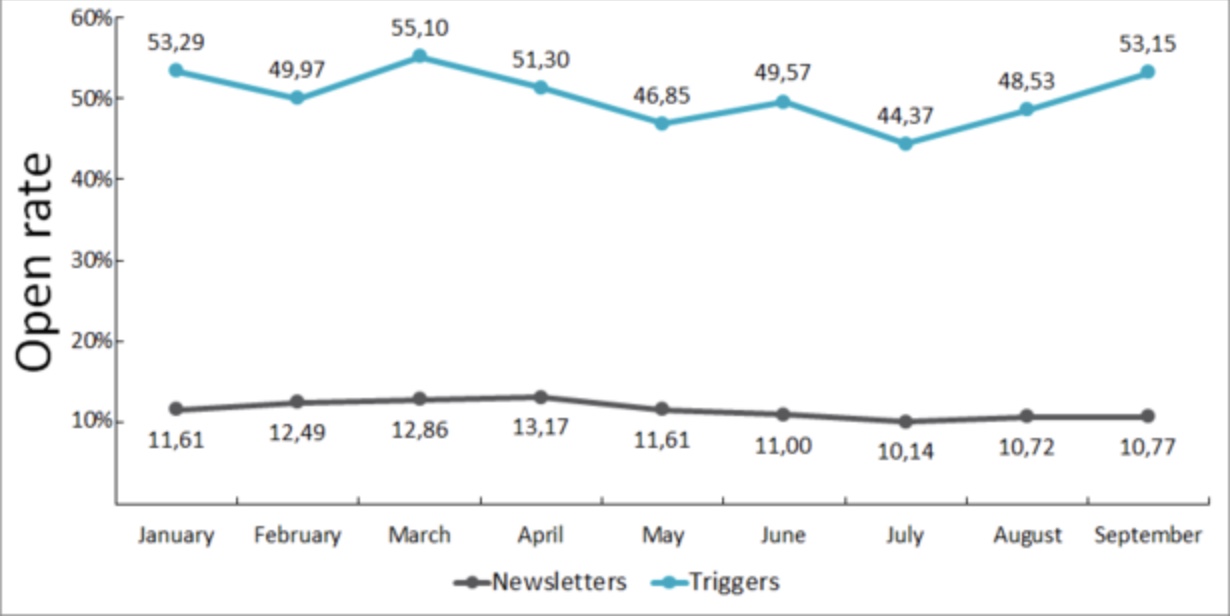
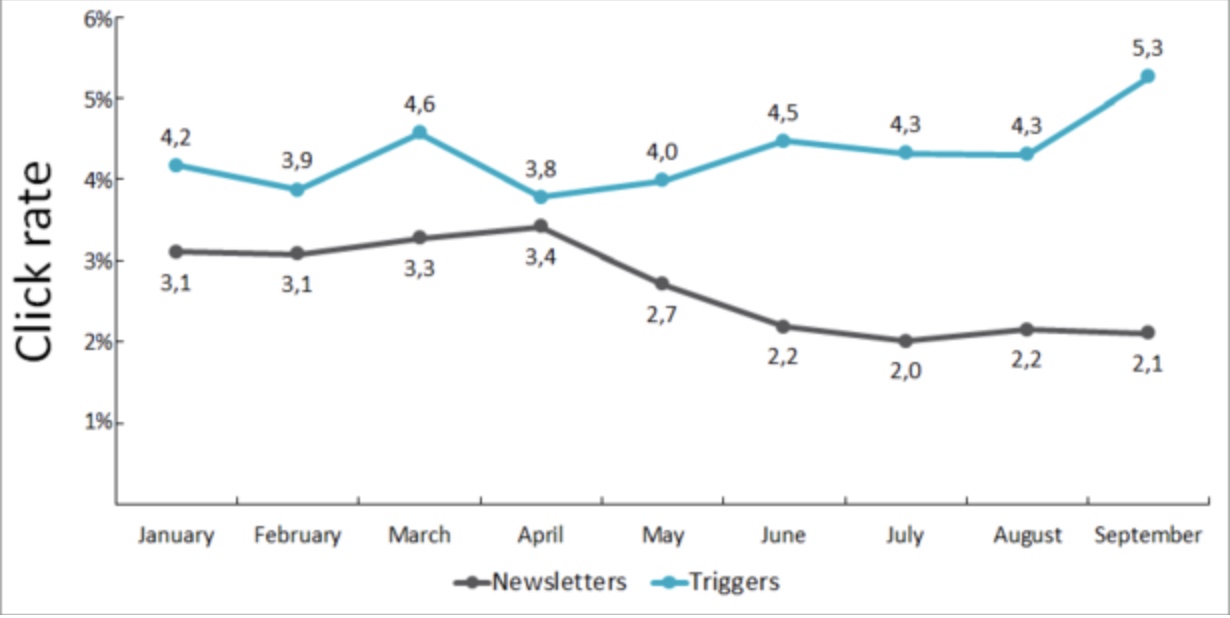
Step 2: Calculate Averages
Then, take the average of the metrics you gathered in Step 1. Simply add up the values for each metric and divide the total number of email campaigns sent during that time span. So, if I had three campaigns with open rates of 21 percent, 23 percent, and 42 percent, my average open rate would be (21 + 23 + 42) / 3, or 28.67 percent.
Step 3: Identify Outliers
Now you should take a look and see where any outliers are.
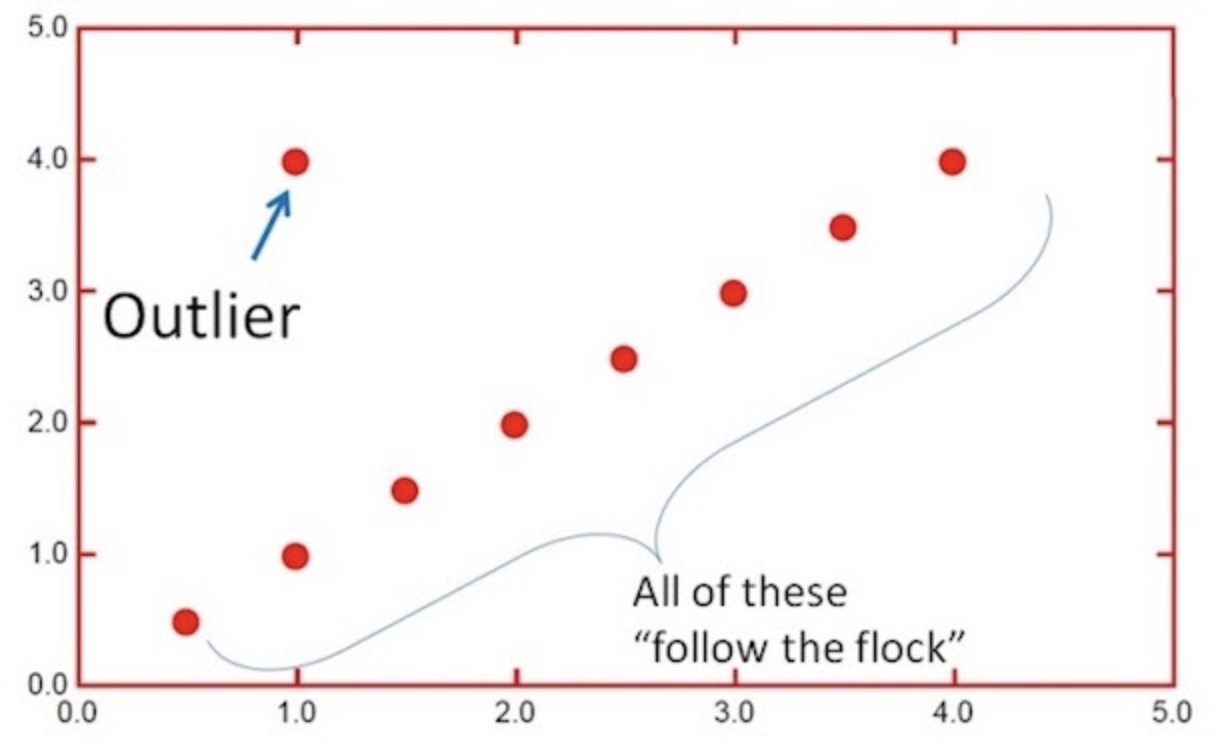
Once you know the average open rate, for example, you will see if there were any projects that had an exceptionally high or low open rate. Keep an eye out for these outliers.
Step 4: Identify Patterns
Are there any trends you’ve noticed? Is there a particular subject that performs exceptionally well? Perhaps sending your emails at a certain time of day performs better or worse? Take note of any trends that arise and apply them to future campaigns.
Step 5: Determine Baselines and Goals
Finally, you can create benchmark numbers and objectives for each of your email marketing metrics. This way, you’ll be able to determine whether a particular campaign performed better or worse than intended. You’ll also be able to replicate what worked and discard what didn’t.
Assume one of your emails had an open rate that was significantly higher than your baseline. Take a look at the subject line and consider why it performed so well. Perhaps it was the type of subject line or issue to which your subscribers responded? You can build more subject lines like that in the future now that you know what works.
Now that you’ve established baselines and targets for each of your email marketing metrics, let’s take a look at a few main variables that you’ll want to evaluate in order to optimize your campaigns and achieve your objectives.
5 Essential Email Marketing Statistics You Should Track

Let’s look at five of the most relevant email marketing indicators right now. Whatever the email marketing objectives are, these figures are worth monitoring on a regular basis.
1. Delivery Rate
The proportion of your emails that are successfully sent to their recipients is referred to as the email delivery rate. When an email is not sent, it is often referred to as a ‘bounce.’ This can happen for a variety of reasons, including expired email addresses, temporarily inaccessible email servers, full mailboxes, and so on.
Tracking your email delivery rate is essential because you want as many of your emails as possible to reach their intended recipients. Your campaigns, otherwise, are likely to underperform, and you risk overpaying for your email marketing platform.
Measuring your delivery rate can be done with this simple formula:
Delivery Rate = ((Total number of emails sent – Bounces) / Total number of emails sent) * 100%
Subtracting the bounce rate from 100 percent is another way to measure your delivery rate. Most email marketing platforms, such as AVADA Email Marketing Automation, produce campaign reports that provide bounce and/or delivery rates:
As a general rule, a delivery rate of 95% or higher is preferable. If your rate is poor, you can rethink the methods you’re using to construct your list, keep an eye on the size of your emails (to ensure they’re not too large), and search them for material that internet service providers automatically block.
2. Open Rate
Your email open rate, as the name suggests, refers to the percentage of your list’s subscribers who opened a specific email. Open rates tend to vary depending on the industry and the type of content sent. The higher your open rate, the more likely it is that subscribers will engage with your content.
Email open rates are almost always far lower than delivery rates. This isn’t a concern. In general, an open rate of 15 to 25% is considered safe. You can use the following formula to measure your email open rate:
***Open Rate = (Unique opens / Number of delivered emails) * 100%
The majority of email automation services measure the open rates of your campaigns automatically. Crafting appealing subject lines, and adding the recipient’s name to the email’s subject are some of the most popular tricks for improving this rate.
3. Click-Through Rate (CTR)
The Click-Through Rate of an email campaign is one of the best measures of its performance (CTR). This is the percentage of recipients who opened your email and clicked on at least one link. A CTR of 5% means that for every 100 subscribers you sent an email to, five of them clicked on a link in it.
This measure, rather than the open rate, indicates your audience’s interest in the content of your email. Fewer people are likely to do this action and engage with your campaign. As a result, you should expect lower CTRs than open prices. According to data, the average email CTR rate is 2.6 percent.
Your CTR can be measured with the following formula:
***Click-Through Rate = (Emails clicked / Number of delivered emails) * 100%
This metric can also be found in the campaign reports of your email marketing software. Improving your CTR can necessitate optimizing your content for different devices and personalizing your messages for particular audience groups.
4. Conversion Rate
Every marketing campaign encourages viewers to take one or more particular actions (such as making a purchase). Your conversion rate is the percentage of email subscribers who complete a desired action, such as visiting a product page and then purchasing that item.
Conversion rates are another important predictor of the effectiveness of the campaigns. However, determining an ideal conversion rate can be more difficult than determining other metrics. These prices, for example, are highly dependent on the cost of a conversion and differ greatly even within the same sector. They should be significantly lower than your CTRs.
Here’s a formula for measuring email conversion rate:
***Conversion Rate = (Number of conversions / Number of delivered emails) * 100%
There are ways to improve more email-based conversions aside from increasing the open and click-through rates. Some effective strategies include demonstrating your product or service in use, addressing popular customer questions and concerns, and timing your messages properly.
5. Overall Return on Investment (ROI)
Finally, the most conclusive predictor of how profitable an email marketing campaign is is the Return on Investment (ROI). ROI compares the amount of profit generated by an email marketing campaign to the amount spent on it. This statistic can be expressed as either a ratio or a percentage.
Every marketer’s ultimate goal is to generate a high ROI. Email marketing ROIs, on the other hand, may be especially high. Estimates differ, but the average ROI for this marketing platform is about 122 percent.
You can use this formula to measure your email marketing ROI:
***ROI = (Revenue – Expenditure) / Expenditure
This means you’ll have to keep track of both the expenses and the revenue generated directly from your email marketing campaigns. The easiest way to do this is to use a tool like AVADA Email Marketing Automation that automatically monitors these numbers:
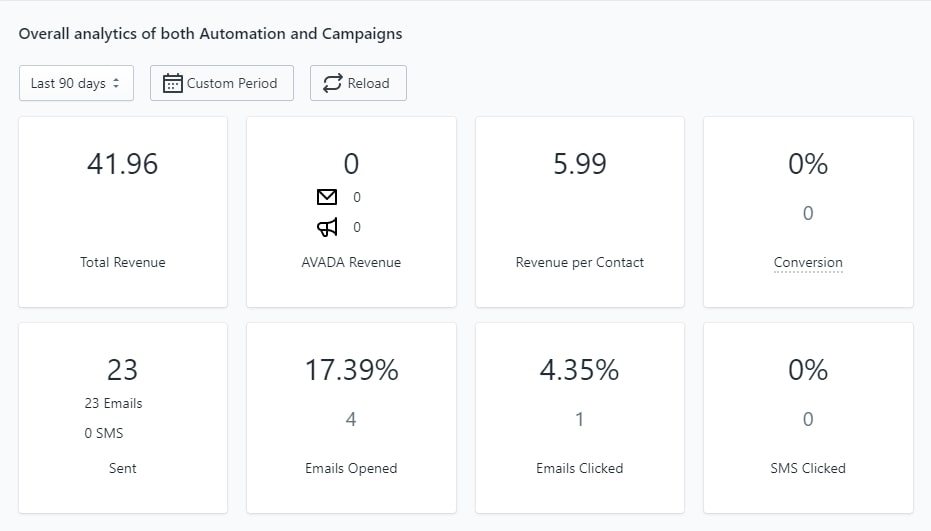
The ROI of a campaign is often a representation of its other primary metrics. To achieve a higher ROI, you should concentrate on improving the figures mentioned above, as well as lowering the costs of your campaigns (if possible).
Read more: Email Marketing ROI: Definition, How to Calculate, & More
Final words
That’s it! I hope this article has provided you with valuable information about how to get started with email marketing tracking. Please feel free to leave comments below for further discussion on this topic!
New Posts

How To Set Up Google Analytics 4 For Your BigCommerce Store






